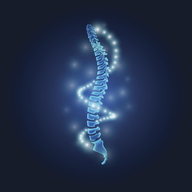Hydrogel Guidance Tubes for Aligned Tissue Regeneration
TECHNOLOGY NUMBER: 7763

OVERVIEW
A highly porous tissue regeneration scaffold to aid spinal cord injury- Production of hydrogel microspheres that fit the geometry of injured tissues
- Leads to axon elongation and increased myelination after spinal cord injuries
BACKGROUND
Spinal cord injuries affect about 250,000 people per year worldwide, and the results of this damage can cause loss of tissue function, paralysis, or even death. There are no viable clinical treatment options for repairing spinal cord injuries, though the creation of biocompatible "bridges" with multiple porous channels has yielded directional spinal cord growth in animal models. However, the current configuration of tissue regeneration bridges must be pre-formed into a desired shape that cannot be easily modified to fit a patient's specific injury. Also, the physical properties of bridges have not been successfully designed to match those of the spinal cord. While disc fusion procedures can be performed as an alternative method to try to provide a stable environment for the spinal cord tissue to heal on its own, the results have been suboptimal. So, a need exists to devise an improved approach to support tissue regeneration after spinal cord injury.
INNOVATION
Researchers have invented a highly porous tissue regeneration scaffold that is constructed from a composite of hydrogel tubes, and which provides the uniaxial support required for directional tissue regeneration following spinal cord injury. A two-step polymerization process forms hydrogel microspheres that are then cross-linked to form tubes that gather to form tertiary structures specific to the geometry of the target tissue. This novel approach involves small scale tubules which are less than one millimeter in diameter, thereby providing flexibility that permits the regenerated tissues to conform to the unique size and shape of the patient's site of injury. Additionally, these tube composites are specifically designed to match the appropriate biophysical cues of the spinal cord, including its viscoelasticity. Studies in a rat injury model showed significantly improved spinal cord growth when compared to existing bridge structures, including axon elongation and increased myelination. This scaffold design can easily be modified for tissue regeneration in other tissues, including both musculoskeletal and cardiovascular tissue.